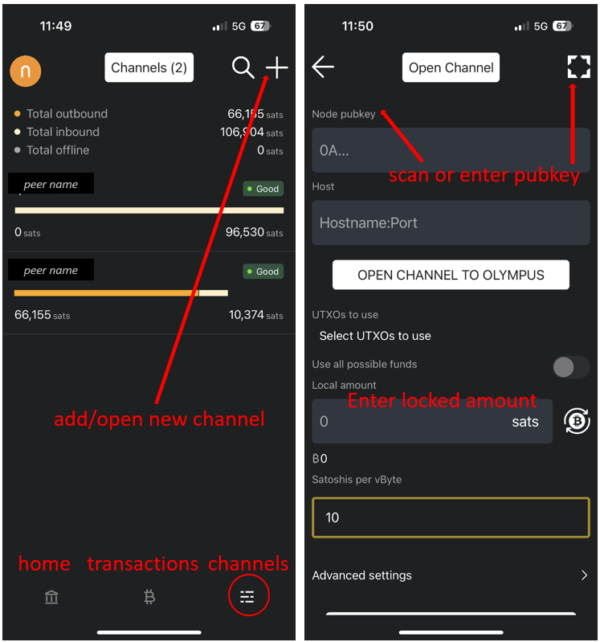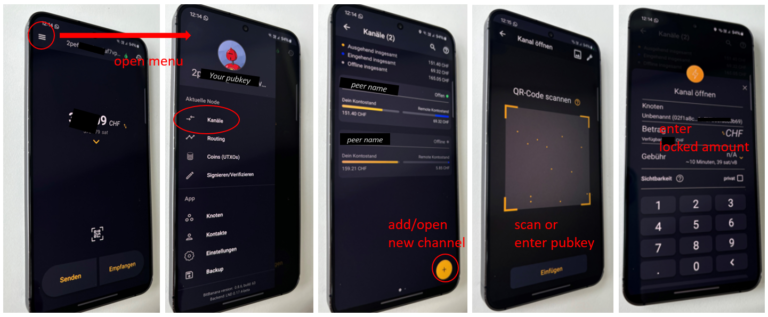Getting started with the Lightning network: Unlocking fast, low-cost Bitcoin transactions
The Lightning Network is a powerful upgrade to the way people use Bitcoin, bringing speed, efficiency, and cost-effectiveness to everyday transactions. With the Lightning Network, Bitcoin transactions happen almost instantly, eliminating long wait times and offering a smooth, seamless experience.
It is designed to handle microtransactions with incredibly low fees, making it ideal for small payments, like buying a coffee to go, that wouldn’t be practical on the main Bitcoin network. This opens up possibilities for real-time purchases at low costs, perfect for frequent, everyday use.
Beyond its speed and affordability, the Lightning Network is built for scale, with the potential to support thousands of transactions per second. Unlike traditional blockchains, which can slow down during busy periods, Lightning’s design allows it to keep up with growing demand without clogging up the main Bitcoin network. This scalability is key to Bitcoin’s role as a global, accessible payment system.
Privacy is also a strong feature of the Lightning Network. Transactions on Lightning are routed across channels rather than being broadcast directly on the blockchain, making it easier to keep your activity more discreet, while still benefiting from Bitcoin’s strong security.
In short, the Lightning Network brings Bitcoin closer to mainstream use, letting people transact easily, privately, and at little cost. It unlocks Bitcoin’s true potential, turning it from a store of value into a versatile currency that can support everyday transactions on a global scale.
How the Lightning network works
Payment channels:
The Lightning Network revolves around the concept of payment channels. A payment channel is a private ledger between two parties where transactions can take place instantly without being broadcast to the Bitcoin blockchain.
To open a channel, two parties lock up a certain amount of Bitcoin in a multi-signature address, which requires both parties to agree on any spending decisions.
Once the channel is opened, the two parties can send payments back and forth by updating the balance in the channel without creating an on-chain transaction for each payment.
Routing through nodes:
If you don’t have a direct channel with someone, the Lightning Network allows payments to be routed through intermediate nodes. For example, if Alice has a channel with Bob, and Bob has a channel with Charlie, Alice can pay Charlie by routing the payment through Bob.
Finalizing transactions:
Once the parties are done transacting, they can close the payment channel. When a channel is closed, the final balance is settled and broadcast on the Bitcoin blockchain, updating the on-chain ledger. It is generally considered a good option, never to close any open channels, since they can still be used as a routing support for the whole system and no Bitcoin on-chain fees will be deducted.
Advantages of the Lightning network
Instant Transactions: Payments happen almost instantly without waiting for Bitcoin block confirmations.
Low Fees: Since transactions happen off-chain, you avoid the high fees associated with Bitcoin’s on-chain transactions.
Scalability: The Lightning Network can handle millions of transactions per second, far beyond what Bitcoin can process on its own.
Getting started with the Bitcoin Lightning network: Open channels and make your first transactions
- Set up your Nakamochi and connect to a node management app
To start using the Bitcoin Lightning Network for fast, low-cost transactions, set up your Nakamochi and connect to Bitbanana (Android) or Zeus Wallet (iOS). Follow three easy setup steps, full instructions here.
Once your Nakamochi is connected with your node management app, you need to open channels in order to make your first transactions in the Lightning network.
- Open a payment channel
Find a peer-node with which to open a channel. This could be another Lightning node you trust or a well-known routing node, such as:
- Swiss Bitcoin Pay Node
- Connecting to Kraken’s Lightning node | Kraken
- Einundzwanzig, der Bitcoin Podcast
When opening the channel, you choose how much Bitcoin you allocate to this channel (this is the amount you can use to send payments). Note: Well-known nodes usually have minimum channel size requirements.
How to open channels on ZEUS (iOS):
- Go to “Channels” Tab (below menu)
- Click on “+” to open a new channel
- Scan or enter pubkey of the node you want to connect with
- Enter locked amount (chose your amount with your peer or if you connect with a well-known node the minimum fixed amount)
- Click on “open channel”

For more information go to: Channels | ZEUS Documentation (zeusln.app)
How to open channels on Bitbanana (Android):
- Open hamburger menu (left)
- Go to “Channels”
- Click on the “+” to add/open a new channel
- Scan or paste pubkey
- Enter locked amount (chose your amount with your peer or if you connect with a well-known node the minimum fixed amount)

Read more: BitBanana
- Sending and receiving payments
Once your payment channel is open, you can send and receive payments. You can send payments to anyone on the network, even if you don’t have a direct channel with them (as long as a route exists through other nodes). To send a payment, you need the recipient’s invoice, which contains the necessary details for routing the payment through the network.
- Closing a channel
When you no longer need the channel or want to settle the funds on-chain, you can close the channel. There are two ways channels can be closed:
Cooperative close: When both parties agree, the channel can be closed and the final balances settled on-chain.
Force close: If one party is offline/unresponsive, the channel can be closed unilaterally. Avoid force close of your channels, because it is slower and more expensive compared to the cooperative close, by having your Nakamochi run continuously.
Suggestion: Try to close as little channels as possible, since this will always be accompanied by Bitcoin on chain transaction fees.
